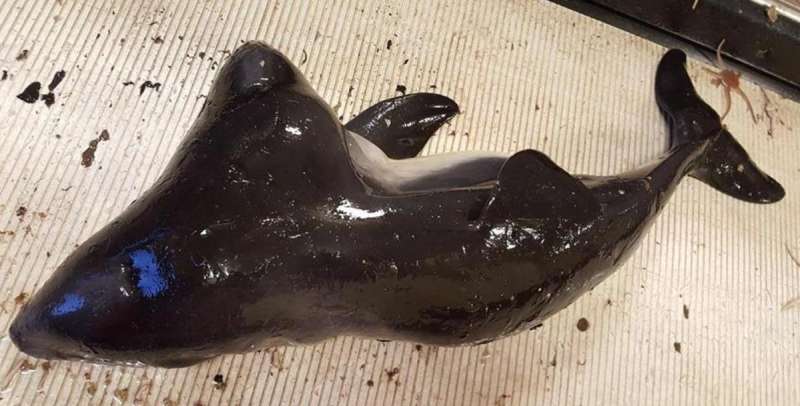June 16, 2017 report
Two-headed porpoise pulled from the ocean in the North Sea

A newly born two-headed porpoise has been documented by a group of Dutch fishermen and studied by a team of researchers from several institutions in the Netherlands. In their paper published in Deinsea—Online Journal of the Natural History Museum Rotterdam, the researchers report how the fishermen caught the porpoise, photographed it and then threw it back into the ocean.
Reports of conjoined twins in cetaceans (a family that includes whales, porpoises and dolphins) are rare, quite naturally because they occur in the open sea—it is also likely that most would die shortly after birth, like the specimen found by the fishermen. In this case, it appears the porpoise was born without the ability to swim.
The fishermen knew the porpoise was a rare find, but because they were subject to rules preventing them from keeping caught mammals, they were compelled to throw it back into the sea—but not before taking multiple photographs, which they sent to the team at Deinsea.
In studying the photographs taken by the fishermen, the researchers found signs that it had been born very recently—the dorsal fins were limp and the umbilical opening was still open—also, the tail had not stiffened, which meant it could not swim. Additionally, both of the heads still had rostrum hair, which disappears in healthy porpoises shortly after birth. The research team reports also that the porpoise was male, and that it had two heads that were fully formed. It also had individual pectoral fins, but just one body. They suggest it is likely the porpoise was symmetrically conjoined, which happens when two embryos fuse into one. In other cases, a single embryo does not split, preventing the development of separate twins.
Though there have been nine previous cases of known conjoined sightings in cetaceans, this is the first for a porpoise. Researchers believe that twins, conjoined or otherwise, are rare in porpoises because porpoise calves in utero are too large. The development of conjoined twins would normally kill the mother, though it is not known if that was the case for the one found in the North Sea.
More information: www.hetnatuurhistorisch.nl/fil … 7_1-5_2017_06_07.pdf
© 2017 Phys.org

















